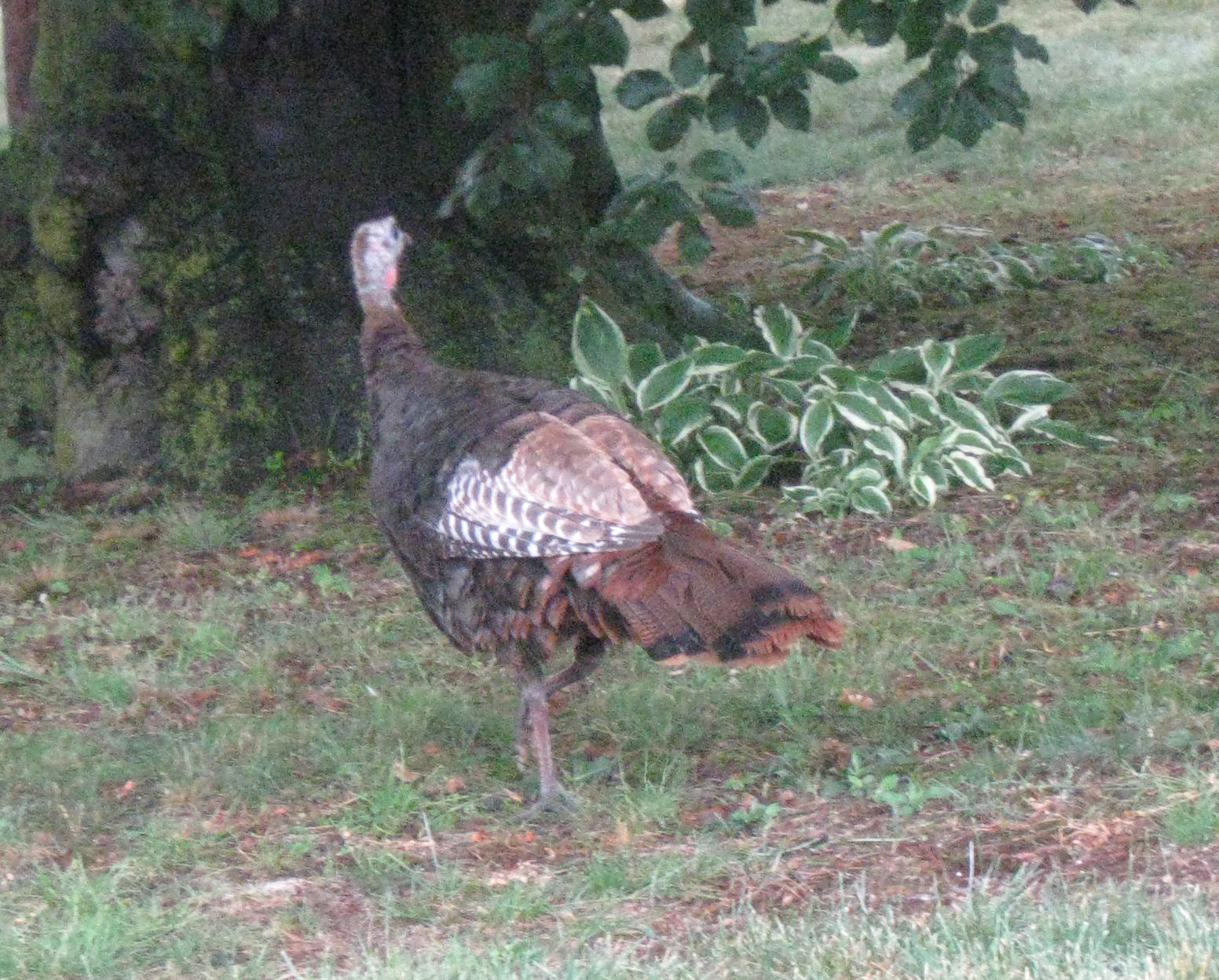Found in the Fells – March
By March, plants, animals and human visitors in
the Fells
are all getting antsy for spring,
and
frustrated by
the distinct possibility of more snow at any time in the month. Hope is
on the
way however as spring officially begins this month and early signs of
spring
are everywhere. Early in the month our clocks change. This will make it
darker in the early morning for a while, for those of you who like to
walk in the Fells then. But now of course there is more light in the
evenings.
Even in February buds on several woody plants were beginning to fill out. By March this is clearly evident, for example on blueberry and huckleberry bushes. And the evergreen ground-plants, if they've had a decent covering of snow during the coldest days of the winter to avoid damage, are now developing their buds. Bearberry, for example, is filling out its flower buds ready for blooming in late April. Skunk Cabbage can be seen at the water's edge of streams or in swampy areas where water is flowing through. It has been blooming by early March in recent years, and as such is the first non-woody plant to bloom in these parts, but ‘bloom’ hardly seems the right word for a flower that would not win a beauty contest, made worse with the skunk-like smell if the plant is crushed. The flowering-body, called the spadix, looks to me like a Faberge egg sitting in its little housing called the spathe. See photo below. It is related to and has the same structure as an arum lily. The bad smell and even look of rotting meat attracts flies, some of the few pollinators around so early in spring . Later, very large bright green leaves develop.
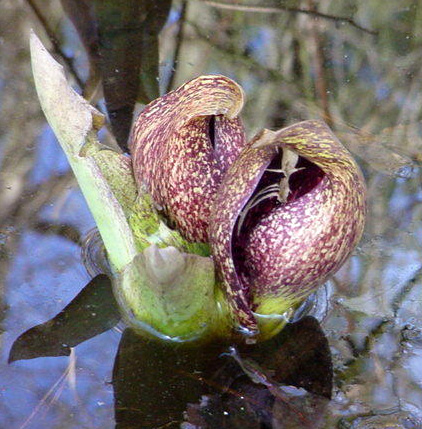
Skunk Cabbage in early March
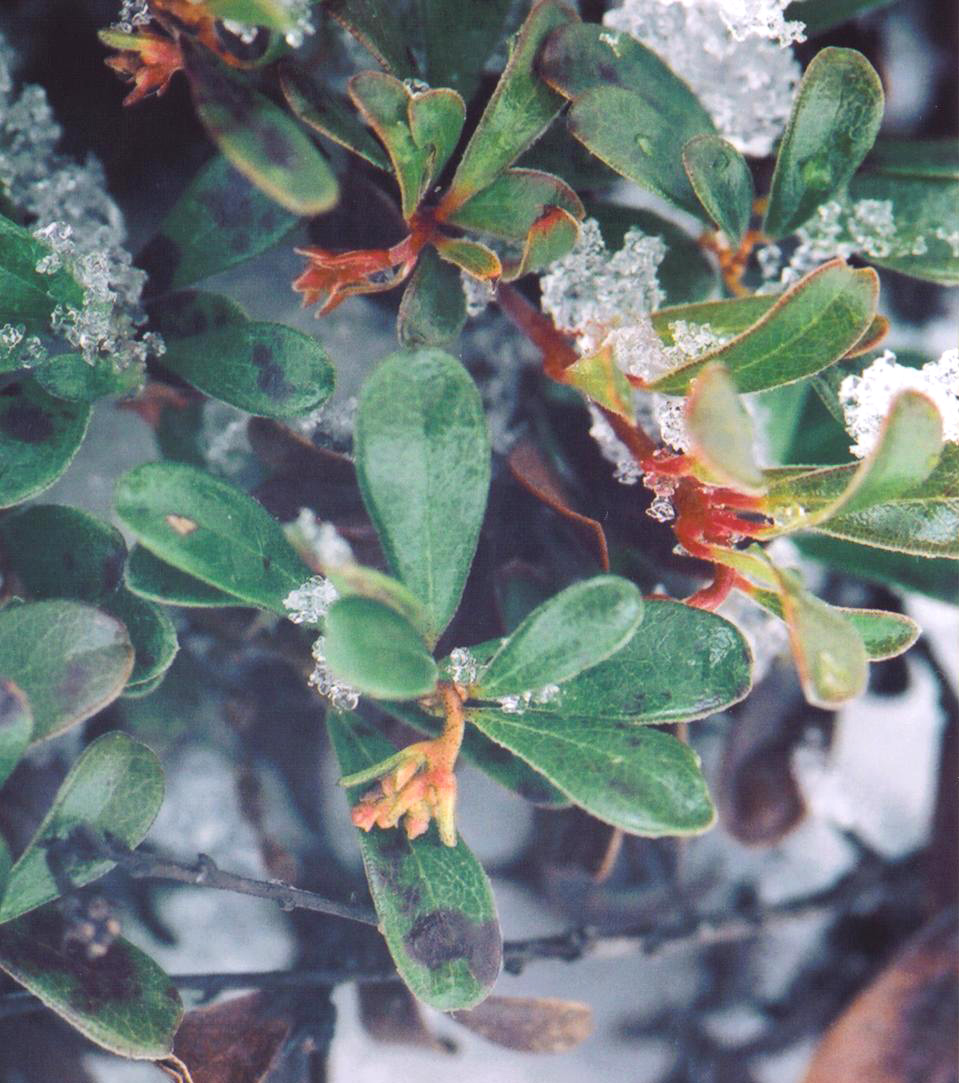
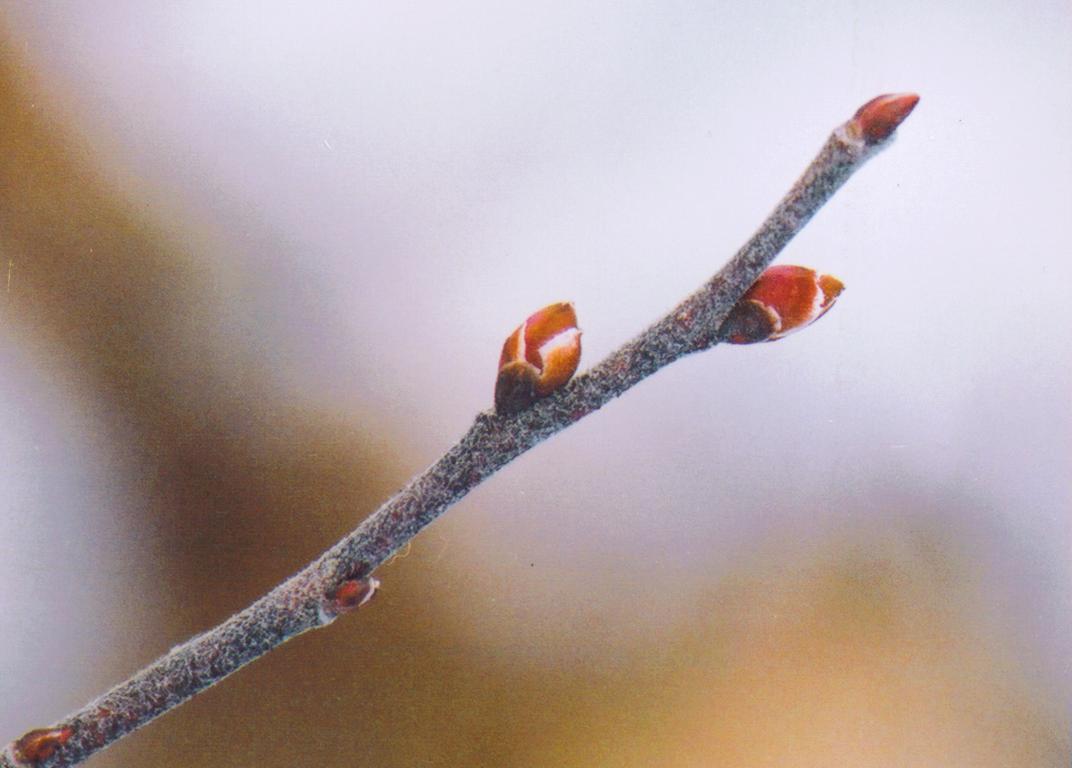
March 20th or 21st (depending on the
year) marks the offical
beginning of spring. But with our latitude here in the Boston
area at
42 North the
literal equinox – i.e. when the length of
day and night are
exactly the same – occurs four days earlier when
the sun rises at
But not all activity is during the day. On reasonably mild, damp nights, salamanders gather at vernal pools in the Fells to congregate and inseminate.
According to experts the temperature needs to be above 40 F and raining, and after dark. They're a bit shy :-) This used to occur in Mid March, but in 2017 it is possible that with the very warm weather in late February that this happened on a record early night. Here is a photo that I took one night in the Fells near the end of March.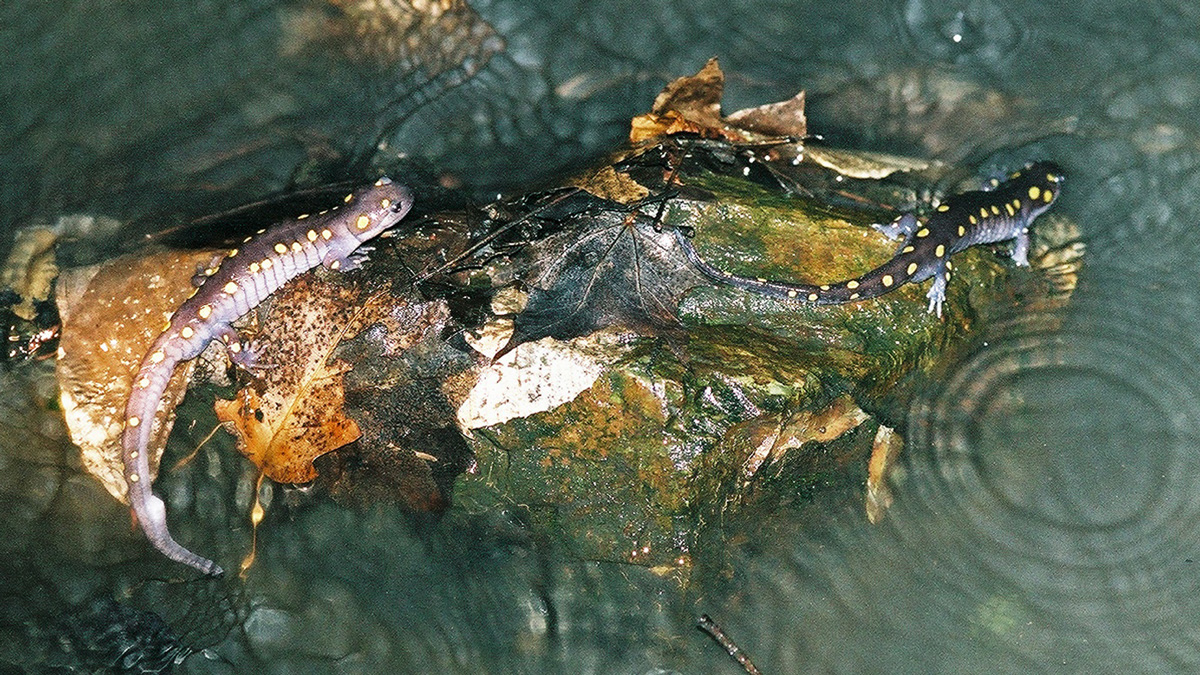
Spotted Salamander Ambystoma maculatum 3-28-05
And their fellow amphibians, the Spring Peeper frogs and Wood Frogs, the latter sounding like ducks, are also active towards the end of March in the pools and swampy areas in the Fellls. And of course song birds are coming back.
Wild Turkeys are also about in the Fells this time of year - their mating season.
